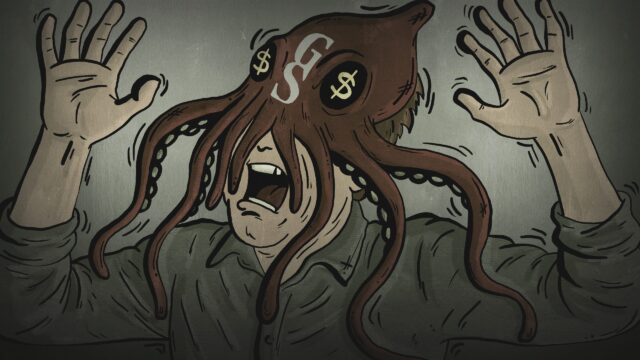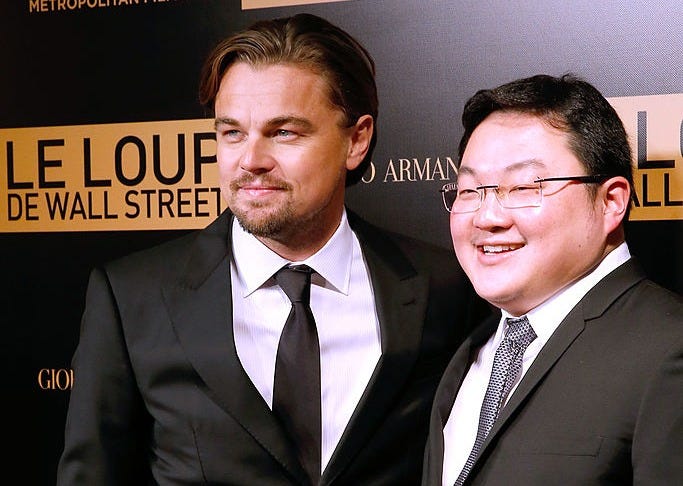Nothing Stops Goldman Sachs

Will Rodgers once said, “It takes a lifetime to build a good reputation, but you can lose it in a minute.”
One way or another we have all been given this sage advice, and some of us have learned the lesson the hard way. Reputation is everything.
Except for Goldman Sachs.
Goldman Sachs seems to defy reputation risk time and time again. The story of the 1MDB (Malaysian Development Berhad) scandal shows beyond much doubt, Goldman can pretty much do whatever the hell it wants. If Goldman gets caught, it enters a deferred prosecution agreement, — as was the case with 1MDB — or pays a fine and then goes on its way as if nothing happened.
In the case of 1MDB, Goldman reached a deferred prosecution agreement with the feds in 2020, but until last week, its former partner and Southeast Asia chairman, Tim Leissner, stubbornly stuck around as annoying residue from the scandal.
Leissner pleaded guilty in 2018 to money laundering and violating the Foreign Corrupt Practices Act (FCPA) by arranging over $1 billion in bribes to officials in Malaysia and the United Arab Emirates to obtain lucrative underwriting mandates for Goldman.
Those mandates earned Goldman Sachs at least $600 million in underwriting fees. Leissner also vigorously ratted on fellow Goldman-ite Roger Ng, who received a 10 year sentence in 2023. Prosecutors asked for leniency, saying in a March 15 letter to the judge that “Leissner’s cooperation was of tremendous value and was central to the government’s ability to swiftly indict and successfully prosecute numerous individuals and entities involved in the 1MDB scheme.”
20250515 Sentencing Memo
547KB ∙ PDF file
Goldman’s general counsel, Kathryn Ruemmler, responded May 21 with a letter to the judge that argued against leniency.
Leissner’s serial lies, fraud and deception at Goldman Sachs continued from the day he first brought the transactions to the firm through the day he left. Mr. Leissner’s efforts in this regard are worthy of sanction, not praise.
20250521 Letter Goldman Sachs
2.06MB ∙ PDF file
Before sentencing Leissner, U.S. District Judge Margo Brodie asked Prosecutor Drew Rolle what he thought of the letter.
Hilariously, Rolle retorted that Goldman’s letter was “the equivalent of a getaway driver showing up at a cooperator’s sentencing and saying: ‘You know judge, we wouldn’t be in this mess if he hadn’t decided to rob a bank.’ ’’
Leissner wrote his own letter to the judge that, according to the Wall Street Journal, his crimes cost him his career, marriage and time with his children. More from the Journal’s account:
He apologized at his sentencing for his actions, saying they were driven by career ambitions. “If I could turn back time, I would and I would do so without hesitation,” Leissner said, choking back tears. “Unfortunately, that is not possible.”
Goldman Sachs has paid over $5 billion in fines and settlements, including $2.9 billion in the U.S for a deferred prosecution agreement on criminal charges and $2.5 billion to Malaysia as well as a guarantee to recover at least $1.4 billion in stolen assets to settle the fiasco.
In 2018 the New York Times reported that in 2012, then-Goldman CEO Lloyd Blankfein met privately with the “mastermind” of the scheme, Malaysian national Jho Low, despite numerous concerns raised by Goldman Sachs compliance staff about Low prior to the meeting.
The meeting between Mr. Low and Mr. Blankfein, described to The New York Times by three people familiar with it, shows the expanding scope of a scandal that is rocking Goldman. Federal prosecutors are examining the 2012 meeting as they conduct a criminal investigation of the bank, two of the people said. And the existence of a face-to-face meeting between Goldman’s chief executive and the man accused of being at the center of a sprawling fraud undercuts an argument the bank has made: that its problems stem from the actions of a small number of rogue employees.
Goldman spokesman Jake Siewert stated that “Mr. Blankfein does not recall any one-on-one meeting with Mr. Low, nor have we seen any record to suggest such a meeting occurred.”
Low, who remains at large, introduced Goldman’s Leissner and Ng to various corrupt Malaysian government officials, including Malaysian Prime Minister Razak Najib.
Leissner and Ng then siphoned more than $1 billion from the bond sale proceeds to pay bribes to the corrupt Malaysian and United Arab Emirates officials, not only for these lucrative bond deals but also to try and secure an even greater score, bringing Malaysian national energy companies public. The funds raised for 1MDB were supposed to go for various infrastructure projects in Malaysia. Much of the debt was sold to the UAE’s Abu Dhabi Investment Fund and other state-controlled concerns.
Leissner and Ng skimmed approximately $115 million for themselves, Leissner $80 million and Ng $35 million. Leissner used his haul to live large, buying among other things a $15 million yacht, part of the Inter Milan soccer team and a Beverly Hills mansion.
Meanwhile, prosecutors say Low used the billions raised for the people of Malaysia to live his best life, purchasing luxurious villas and hotels around the globe, a private jet, Monets, Piccasos and Van Goghs, and even a see-through grand piano for a super-model! Low also backed a film production company, ironically financing the movie, “The Wolf of Wall Street” (he was given a “special thanks” in the credits).

This escapade toppled long-time Prime Minister Najib Razak who also treated the funds as his own personal piggy bank, and was sentenced to a 12-year prison term in Malaysia.
All in all, Malaysian officials believe that approximately $4.3 billion is missing and Malaysia has assumed all of 1MDB’s debt.
In some ways I think that Leissner, Ng and Jho Low were some of the dumbest financial criminals in recent memory. Like the two dopey mobsters in Goodfellas showing up at the post-Luftansa heist party with a new pink Cadillac and a mink coat after Jimmy Burke (Robert DeNiro) warned them not to buy anything.
“You’re gonna get us all pinched!”
I guess this theft was so brazen that even if these three morons had been more careful with their spending they still would have gotten caught.
I think.
What I find maddening most of all are reports that this event is a “black eye” for Goldman or that their reputation was “stained again,” or they were “recast as villain.”
Ok, but other than $5.4 billion in fines and settlement costs (probably a good couple of months for the firm’s global trading desks) what has actually happened to Goldman with their reputation “stained?”
Nada.
The 1MDB story has been out since at least 2018 and it became very apparent early on that Goldman, as an institution as opposed to a couple of rogue bankers, engaged in and profited handsomely from this crime against an entire country. The man at the center of it all, Low, raised red flags to Goldman’s compliance units before any of the underwriting work on the $6.5 billion even took place. And yet they got in bed with him anyway.
It is common knowledge within the industry that emerging market deals like 1MDB are like the Wild West. Bribes and pilfering are more often than not part of the way of doing business. If Goldman’s leadership didn’t do their due diligence on these transactions as they were happening, I think it is because they didn’t want to risk finding something that would make them stop.
The fact is, $600 million is a lot of money and if they were able to keep going and bring Malaysia’s national energy companies, public they would have probably at least doubled that $600 million. If Leissner, Ng and Low didn’t go on a worldwide conspicuous consumption spree they might have even gotten away with it.
Reputation risk is a joke.
Goldman learned their lessons well in the 2000s: They can do just about anything they want and if they are caught, all they have to do is pay a fine, maybe give a half-hearted mea culpa and then get right back to business as if nothing happened.
Because nothing does happen.
